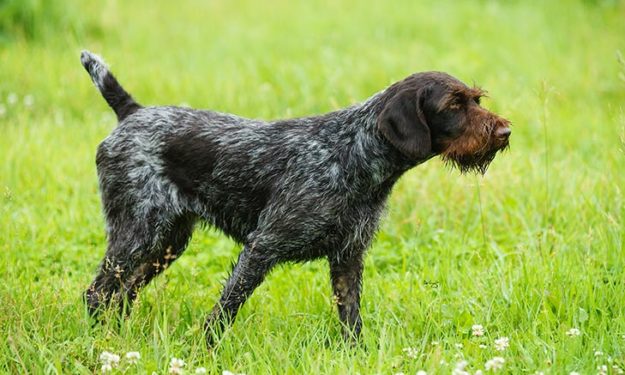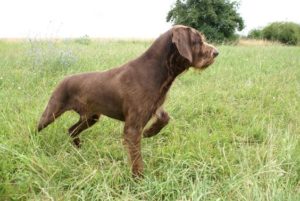German Wirehaired Pointer: Behavior & Care

Their Personality
Today GWP’s are still used for hunting, but have also found comfort in adapting to many lifestyles. Their goofy, yet stubborn personalities put them in a similar personality bracket as many of the larger terrier breeds (Airedale Terriers, Irish Terriers). They are high energy, loyal, protective, and friendly. This breed is extremely intelligent and often easy to train if you start early and remain consistent. GWP’s typically do best with an active household, and if not hunting, having a standard routine for exercise and stimulation.
German Wirehaired Pointers can live with other pets and children if socialized and exposed early.
Their Health
Typically these dogs are quite healthy. Responsible breeders perform genetic testing and health screenings with their veterinarian to ensure healthy breeding procedures. Some of the common ailments this breed might confront are ear infections. Their large, floppy ears can be prone to collecting bacteria so ear cleanings may be prescribed by your veterinarian. Another common injury for many medium to large sized breeds are knee injuries. With any athletic dog there is a risk of a knee or hip injury happening in their lifetime, similar to a human athlete. This is just something to take note of when you are adopting your pup and looking into insurance companies that will cover the possibility of an expensive surgery.
Their Look

Photo From AKC- showing an all brown GWP
Pointers all have a similar large chested, small waist structure. The most common color we find is liver and white spotted with brown noses. Another color scheme sometimes seen is all brown with small sections of white. Their wirehaired coat helps them dry very quickly, protects them from thorny brush, and sheds less than a Labrador, but still does shed. Grooming can be quite simple for these pups. Most will only require baths, while some owners will choose to have them clipped to keep hair contained and neat. They have a “bed head” or “crazy scientist” look that is adorable and adds to their character.
Explore much more information on the German Wirehaired Pointer at the American Kennel Club.
Written by LAUREN PARECE, BS, DMCA, OMCP